The weekend after our Indiana Roundup, my friend Ryan flew up from Florida for some good old fashioned Illinois spillway fishing. I picked him up at the St. Louis airport, and the next morning we started our day at Carlyle Dam. This is one of the spots people visit to add fair hooked silver and bighead carp to their lifelists, and that's what we were after.
Silver Carp (Hypophthalmichthys molitrix)
We started off casting green curly tails on plain hooks, which is known to get the attention of feeding silver carp. However, Ryan's first fish was a shortnose gar, which was unexpected. Usually they like something more flashy that looks like a bait fish.
Shortnose Gar (Lepisosteus platostomus)
Ryan borrowed one of my heavier rods once we found a school of carp and buffalo. If you cast your jig upstream of the school and let it drift naturally with the current, you would almost always get a bite. It seemed like every time I looked over Ryan was fighting a fish.
Silver Carp (Hypophthalmichthys molitrix)
Not all of the fish were fair hooked, like the bigmouth buffalo below. This opens up the debate about whether or not the silver carp are actually feeding. My experience over the last few years has been that in spring and early summer, nearly all of your fish will be fair hooked in the mouth. The hits also feel active (but of course that's not really something you can prove). However, in late summer when it gets hot, almost all of the silver carp you catch are foul hooked, usually somewhere on the face. The percentage of foul hooked fish is probably 20% in the spring and 80% in late summer. I think that's pretty conclusive evidence.
Bigmouth Buffalo (Ictiobus cyprinellus)
We also had plenty of smaller fish hitting our lures. I didn't want to catch any more carp, so I switched to jigs and spinners. I even fished a plain bronze hook hoping to finally get a gizzard shad, but all that would bite were juvenile yellow bass. I really hate gizzard shad, haha.
Black Crappie (Pomoxis nigromaculatus)
White Bass (Morone chrysops)
We felt like we had caught everything we were going to catch at Carlyle, so we drove a few towns over to Shelbyville to fish the next spillway. I promised Ryan common carp and smallmouth buffalo at this spot, and it didn't take long before he had both. His lifer count was doing pretty well, and we hadn't even microfished yet!
Common Carp (Cyprinus carpio)
Smallmouth Buffalo (Ictiobus bubalus)
There were some large gar cruising the surface. I couldn't get them to chase lures, but a piece of cut bait freelined on a small treble hook proved irresistable. The largest one I landed had a broken beak. We joked that he was the old prospector gar. He was a good sport about it.
Shortnose Gar (Lepisosteus platostomus)
I joined Ryan fishing for carp and buffalo before we called it a day. For some reason I couldn't get a buffalo to pick up my bait, but there were plenty of carp. About a third of the ones at this spot are really dark, almost black, and a little higher bodied than the other common carp. I'm curious if they have some goldfish genetics. They never seem to be very large, which would also support that theory.
Common Carp (Cyprinus carpio)
We ended the night in Charleston so we could get up the next day and fish the Embarras River and its tributaries.
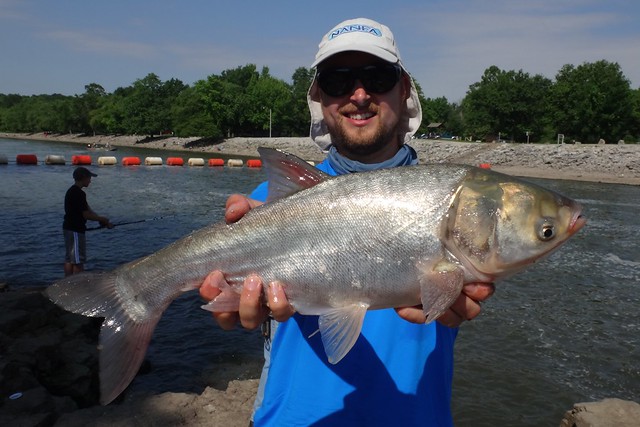
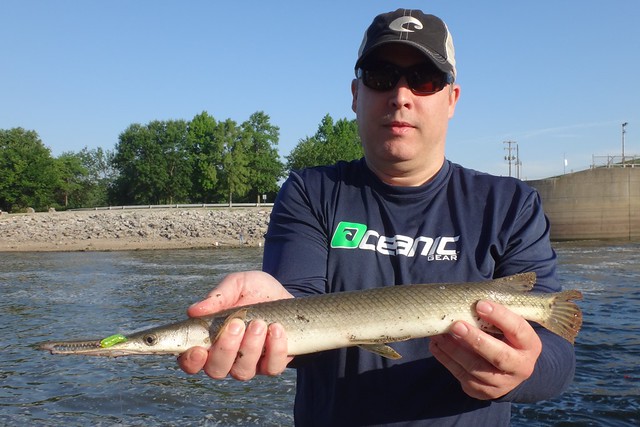
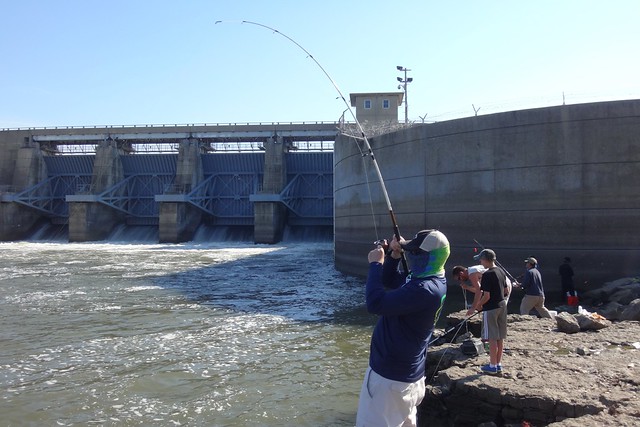
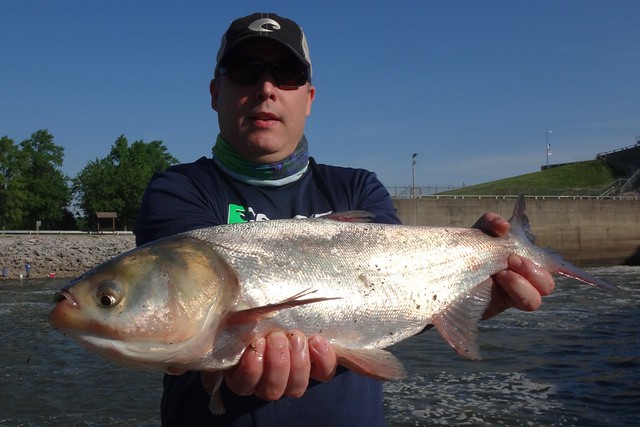

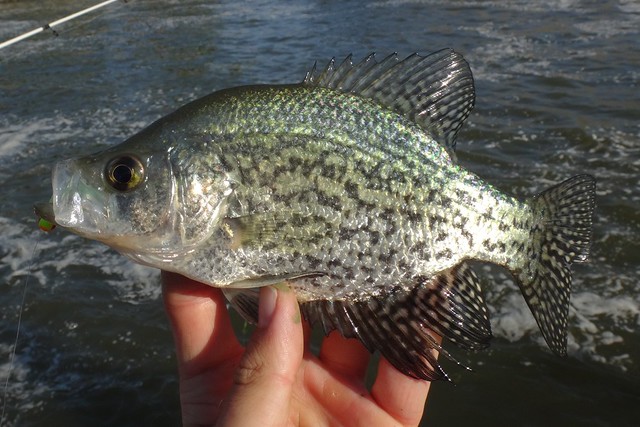
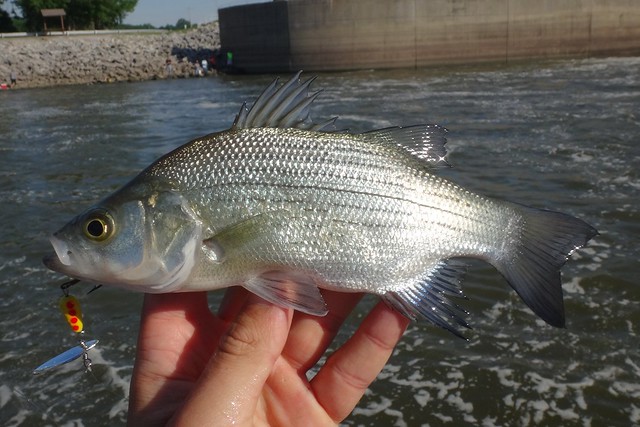
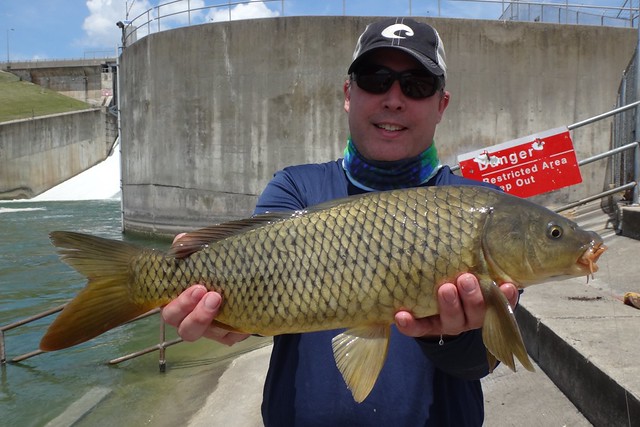
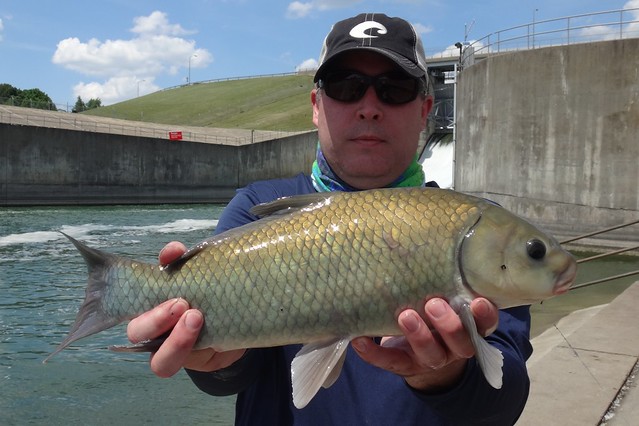


No comments:
Post a Comment
Note: Only a member of this blog may post a comment.